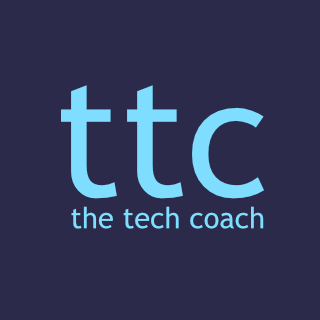Without research, we stagnate. Without research, we may keep our vision, but we risk not keeping up with what is relevant. With research, we create new learning pathways for ourselves, which lights the fire within. With this fire, we can light the path and learning opportunities for our students.
What role does research play in my daily practice as an educator? I’ll tell you what role; it is at the center of everything I do, it is the one ring… It is what keeps me awake at night, looking for the next app to integrate into lessons, a scandal to hit Facebook, or what on earth is a blockchain!
Researching Research
I love research – whether this is reading the latest COETAIL report recommendation, watching a YouTube video on how Amazon (according to Simplilearn) uses the data it collects to make suggestions for our next purchase, listening to a TWiT podcast on Google Dashboard (see below), talking to the design teacher on how best design a yearbook (Pictavo) or chatting with students about which social media apps are most popular in their home country (it is how I found out about Kakao Talk).
Actually, on that point of speaking to people, children or adults, what I have come to appreciate is that everyone is an expert in something, therefore every conversation we have – we have the opportunity to carry out research (10 Ways to Having a Better Conversation by Celeste Headlee). For example, in the Unicef Report – Children in a Digital World, it talks about the ‘Goldilocks’ approach to children’s screen time (could they use Forest?) – and how we should be concerned with what they are doing online and not how long they spend online. In fact, in the past I have introduced to families the Family Media Plan (American Academy of Pediatrics), which is based on a similar principle to ‘Goldilocks’, to help families create a structure for digital media consumption.
Proactive not Reactive
My active research begins when I wake up first thing in the morning. Apart from pressing the snooze button several times and wishing that Shanghai was 23 degrees celsius at 6 am and not 3 degrees* (my apartment is so cold that when I wash the dishes the water freezes to my hands, which I need to warm up on my portable heater). I open my phone and start either a TWiT or Stuff You Should Know podcast; ok this may be a bit unhealthy, going straight to my phone first thing in the morning, but I’m addicted to my OnePlus 5T, perhaps I should practice what I preach 🙂
I quite enjoy listening to educational things in the morning, and it leads me to listen and read more throughout the day, and in turn, ask more as well. Just recently I asked all of my Grade 7 students to record how long they spent each day on their devices, which we broke down into websites, apps, and games they were on and what was their purpose/goal for using these. After the students collected this information, we were able to start a discussion on how their use of digital products, and whether or not students were using these for wants versus needs. E.g. I want to play Fortnite (or is it Apex Legends now), but I need to get my summative done for tomorrow.
Create a Positive Impact Through Active Research
I plan to ask (through Office 365 Forms – sorry Google Forms, I live in China) students who their favorite YouTubers are – Why? Because, I will watch a couple of these YouTubers’ videos and perhaps try to adapt some of the features that our students find so amazing in the first place, into my own screen-cast tutorials that I make for the students; without being too cringe; there is definitely a high chance of this happening! In the Living and Learning With New Media report, it talks about how teens displayed their musical preferences on MySpace (how old is this report?), and it states the “pervasiveness of gaming”.
Of course, the popularity of gaming is old news, but through reading about it all over again, and reflecting on this, it has dawned on me that gaming is the new social media #boldpredictions- it is where our kids/students are hanging out “Kids Living and Learning with New Media”. Socializing through gaming is more organic than the old school posting we see on Facebook (COETAIL Learning goal?) – do any under 30’s still use it? My continued research of what my students find interesting can help me understand their wants and needs, which can then influence me to choose which tech, topics, and tutorials to introduce in lessons – in a meaningful, creative, and productive way.
Indeed, just this week, after listening to yet another TWiT podcast (my holy grail of research these days) I found out about Google Dashboard. Have you heard of it? Well, I had not, and neither had the vast majority of staff and students (yes we are in China remember) that I have talked to so far. In any case, I did have a look at this mythical Google Dashboard and I was amazed at the amount of data that I was creating, and that Google was collecting; thanks for creating this User Interface Google; by the way Microsoft, where is your dashboard? I digress. I used this active research, as mentioned above, to introduce Google Dashboard to staff, and then to Grade 9 students during their digital citizenship lesson – to give them a chance to explore their personal (big) data. And boy was that an eye-opener…
Long live the digital revolution, and space heaters.
